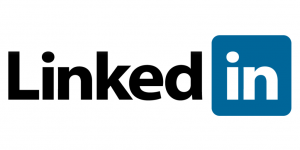The following are reflection blog posts that I have done throughout the duration of my ENGL 301 Technical Writing course:
Reflection Blog #1: Definition Assignment and Peer Review
The original writing of this assignment was something I felt confident with because I simplify complex terms daily in my professional life. Working in a dental office I regularly have to explain the steps of a procedure to patients so we can obtain consent to begin treatment. During the original writing process of this assignment, I was trying to think of what I would say to a patient who needs a root canal. A challenge I faced here was the communication of certain dental terms that I am familiar with, but sometimes the general population would not know what it means.
The peer review portion of this assignment was an interesting process. I developed an understanding of how overwhelming it is to first try to learn something that you know nothing about. When peer reviewing my classmates work, I realized how important it is to have an organized structure to your writing. My classmate did a great job including subheadings to separate the information and create an easy flow for the reader. I also learned throughout this process that I have a strength in attention to detail by noticing minor grammatical errors and missing citations. This helped me gain confidence in my writing skills. To know that I am able to help a fellow classmate improve their writing skills also contributed to my confidence as a writer.
The most impactful part of this assignment for me was the editing process. I learned how to select the right level of detail for a specific audience and situation. For example, I am around dental terms all day and they have become so familiar to me that I forget they are not common words for the general public. I edited a few parts of my writing to include parenthetical definitions of certain terms like “crown” and “antibacterial” to help the reader better understand the material. I also realized the need for visuals to have corresponding descriptions. When first selecting the visual of a root canal procedure I understood the picture right away so assumed others would too. My classmate that peer reviewed my work suggested I include the steps that the visual is showing so they know what they are looking at. That was a very eye-opening experience for me and helped me recognize the importance of being specific and direct when defining a complex term.
To conclude, I have learned that I need to take my time when writing in order to select the right level of detail for the situation. I understand the importance of peer reviewing to gain an alternate perspective of writing styles and learn your own strengths along the way.
Reflection Blog #2: LinkedIn and Report Proposal
Creating a LinkedIn Profile:
I found creating a professional social media account was a great way to use information from my resume and create a unique and interesting profile. The process of creating a LinkedIn profile was more time consuming than I had anticipated. I originally thought it shouldn’t take very long or be difficult to take information from my resume and put it on my profile. However, I realized there is precise detail and thought that goes into setting up a professional profile. I wanted to ensure I mention all relevant previous work experience, skills and create a unique summary. After completing the profile, I felt confident that this would be an excellent way to professionally network with others.
Process of Preparing my Report Proposal and Outline:
I found it very helpful to organize my research plans in the form of a report proposal and outline. I definitely feel on track with the progress of my report. I am a full-time student and I work full time, so I am very busy. Having organizational and time management skills helps reduce my stress level and ensure I don’t miss any deadlines. The report proposal and outline were the perfect organizational tasks I needed to help plan out the rest of the semester. I am curious with how my investigation is going to become a formal report. I have never created a formal report before so it will be an interesting and a new experience. I imagine that, if I stick to my outline, I will gather all of the information I need for the formal report and the formal report will be a complete package of my findings.
Peer Reviewing my Partners Proposal:
When peer reviewing my partner’s report proposal, I learned that organization is key to a good first impression. By being organized, the purpose of the report is clearly stated in the introduction and this prevents confusion for the reader. Also, peer reviewing my partner’s proposal encouraged me to focus more on expression and grammar in my own report proposal and future assignments. I learned that it is easier to catch small mistakes in someone else’s writing than in your own. Overall, peer reviewing my partner’s report proposal helped me better understand the objectives of the formal report and the importance of slowing down when writing.
The Peer Review Process:
Peer reviewing allows me to gain perspective on different writing styles. It is refreshing to read someone else’s work after re-reading your own work again and again. The strategies I have learned from peer reviewing help me in my other assignments as well. I ensure all assignment requirements are met, typos are avoided, and organization is consistent. This process has created somewhat of a “checklist” in my mind when I am doing other assignments to ensure high quality in my work.
Reflection Blog #3: Formal Report Draft
The Process of Researching for my Formal Report Draft:
The process of researching for my formal report draft was interesting and exciting. First, it was interesting because I had never done much research on the topic of improving ergonomics and pain management in a dental office, so I was finding a lot of new information. It was quite easy to find literature on my topic which emphasized just how common poor ergonomics are in the dental field.
Secondly, my primary research of survey and interviews was exciting because I felt very passionate about my topic and determined to gather relevant material for the report. After my survey questions were approved to use, I realized I wasn’t exactly sure how to implement this survey. I wanted to get it across to several people but felt sending them a Word document and them having to send it back to me was impractical. So, I found a way to re-create my survey in an online forum and I could send people the link to it which makes it very easy for them to participate. I was so glad I found this online tool to use for my survey because not only was it an efficient way to gather findings, it automatically formulated tables and graphs to summarize the survey results. These tables and graphs were helpful because I used them in my formal report draft for my visuals and I could clearly see how many dental professionals experience work-related pain and poor ergonomics.
The Process of Organizing and Writing my Formal Report Draft:
I had a feeling I was going to struggle with organizing and writing my formal report draft because I have never written one before. However, the textbook really helped me throughout the entire writing process. Initially, I definitely had some issues with the layout and organizing my information but, after reviewing the explanations found in the textbook, I had a better grasp on it. I found this was the type of writing project where once you start you get in the zone and just continue writing. I think one of the reasons that was the case was because of how invested I am in the issue I was writing about. It became clear just how much of a difference it makes in writing assignments when you’re truly passionate about a topic. Overall, the process of writing this formal report draft was a positive experience and I am happy with the outcome.
Reviewing my Peers Formal Report Draft:
I learned the importance of design in writing projects when reviewing my peer’s formal report. With something like a formal report where there is a lot of information and a lot of text, it can be difficult for the reader to stay focused. My classmate did an excellent job at using bullet points to clearly identify recommendations for a solution and had a consistently clear design throughout the entire report. I noticed how important this quality was for a paper when I realized I was intrigued and engaged the whole time I was reading it, and I had no former knowledge of the information. Usually when reading something that you have no background in, it can be quite boring. However, with great design techniques implemented throughout a paper, a reader who knows nothing about the topic has a better chance of wanting to continue reading and can learn something new.
Reflection Blog #4: Web Folio
Process of creating my Web Folio:
At first, I thought creating my Web Folio was going to be easy because I already had most of the information that I needed to include. However, what I have learned is technology can sometimes be a tricky thing. In order to successfully create the “pages” and “menus” I had to do some further researching to ensure I was on the right track. I found some helpful YouTube videos and articles on Google that explained how to use WordPress. After learning the important steps in creating “pages” I was on a roll!
 The next important element of my Web Folio was the design. I would consider myself to be a perfectionist and I spend a lot of attention to detail. So, this was definitely a time-consuming process. I wanted to make sure anyone visiting my site would find it organized and user-friendly. I also wanted to make sure it was visually appealing. I am proud with how the design, format and layout of my Web Folio turned out.
The next important element of my Web Folio was the design. I would consider myself to be a perfectionist and I spend a lot of attention to detail. So, this was definitely a time-consuming process. I wanted to make sure anyone visiting my site would find it organized and user-friendly. I also wanted to make sure it was visually appealing. I am proud with how the design, format and layout of my Web Folio turned out.
Technical difficulties and design elements aside, I believe my Web Folio does a great job highlighting my academic and professional achievements. My goal for this website was to highlight my skills and accomplishments in a way that is organized and impressive. I believe I successfully reached this goal.
To sum up, I faced some challenges at the beginning of creating my Web Folio but in the end I am very happy with how it turned out.
Reflection Blog #5: Self-Assessment Reflection
Weaknesses and Strengths in my Learning Process and Assignments:
My weakness in my learning process throughout this course was staying focused. A large portion of the learning process in this course was reading the online textbook. I sometimes found it difficult to stay focused on the subject when reading long chapters. This would make writing the assignment that corresponded with the chapter difficult because I wasn’t retaining information well. In assignments, my weakness was related to catching grammar mistakes. I found that when I get in the zone of writing I would often make grammar mistakes and forget to correct them at the end. I was fortunate to have peer reviews of my work that reminded me to slow down and keep an eye out for grammar mistakes.
My strengths in my learning process were time management and organization. Since I am working full-time and a full-time student, I need to have good time management to stay on track. I set aside time twice a week to work on my assignments in this course and had an agenda with all of the due dates listed. My strict weekly schedule and my agenda were very helpful tools throughout this course. In my assignments, my strengths were providing detailed work while remaining concise and ensuring that all assignment requirements were met.
How my Skills and Strengths will Support my Future Career and Educational Goals:
My skills and strengths as a student support my future career and educational goals because I will be organized, dedicated and have great time management in my career and a potential graduate degree program. Also, as a student, I have learned the importance of working well with others and collaborating to reach a common goal. This is something that I will face often in my future professional and academic life. My future career goals include either becoming a professor or going into research. With both of these career choices, time management and working well with others are crucial.